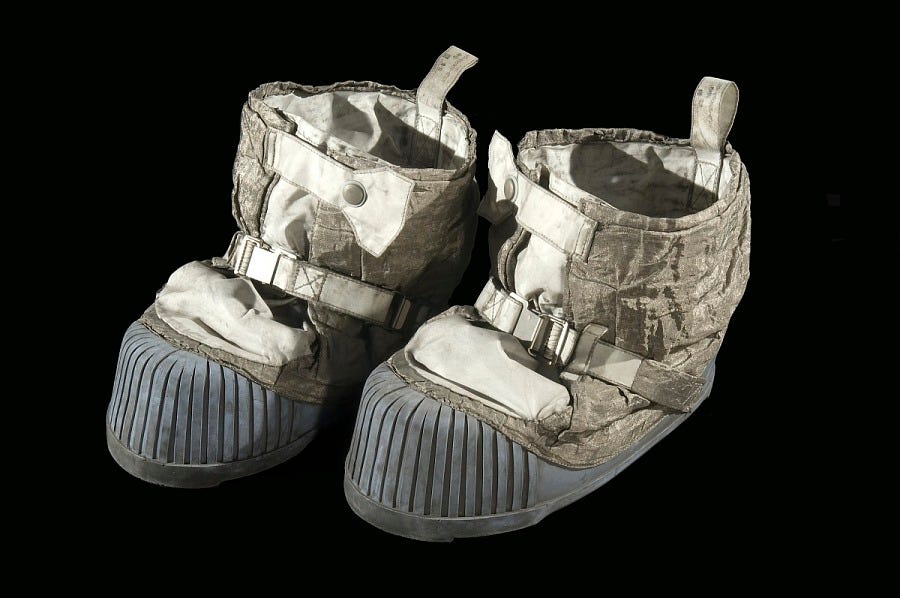Walking on a glacier outside of winter is like what I imagine walking on the surface of the moon to be, minus the lack of gravity part. The ice is crumbly and pitted, it’s laced with crevasses and seemingly bottomless millwells.* There’s a deep thrumming running under the ice that gets in my bones, an energy that informs me of who and what I am: nothing and everything all at once. The ancient ice is a reminder of my infinitesimally brief time on Earth, and the serendipitous happening of just being born to live it. In my imaginings, standing on the moon, staring back at earth, would produce the same experience. Also, I’m sure the boots of an astronaut suit are at least half as awkward as crampons.
My space body analogy doesn’t end at topography; while out on Athabasca Glacier last week my friends and I ended up meeting some NASA scientists and engineers who had a research station on the glacier. They were testing parts for the EELS robot which is a “mobile instrument platform conceived to explore internal terrain structures, assess habitability and ultimately search for evidence of life. It is designed to be adaptable to traverse ocean-world-inspired terrain, fluidized media, enclosed labyrinthian environments and liquids.” Check it out on the JPL site. What better place to test a snake robot designed to maneuver and look for life on an ice encrusted, ocean moon than a glacier? SO COOL.
The millwells, or moulins, were perhaps my favourite feature of this particular glacier. The flowing water dropped endlessly into into the dark, icy depths, and when I got as close as I dared and the tingly adrenaline started to flood my skin, I could imagine sliding down forever until I fell out of existence. That’s usually my cue to take a step back, remind myself that I have an annoying habit of tripping and/or falling, and that I won’t actually breach another dimension if I end up in the millwell. Still, the spines and curves of those water shafts were mesmerizing.
The glaciers in the Canadian Rockies have a disturbing ash problem, caused by the wildfires of the past few years. They also have a disturbing melting problem, caused in large part by humans’ century-long, just can’t quit you, love affair with fossil fuels. This was abundantly clear from the measurement sticks placed in the middle of the glacier showing just how much it’s receded, and the available transportation for tourists to the edge of the glacier. (If Greenland can build a kilometre long boardwalk to view their incredible ice fjord, surely one of the most beautiful national parks in the world can do better. IYKYK)
My eventual grandchildren will probably never experience glaciers in these mountains, at least not like I have. I suppose I feel resigned about it; sad seems too trite a word, and despair isn’t really my thing. The world is a huge, wonderful, magical place, and the cosmos beyond surpasses the capabilities of my imagination. Maybe my future descendants will experience that vibration of time and space on another moon or perhaps they will be able to stand on a patch of Earth’s timeworn ice and feel the connection to the deep wonder of what flows beneath.
Initially I created this piece, Unearthed (Ephemerality Series), on Athabasca Glacier that day because I was drawn to the contrast of the black on the ice. Then later, as I was editing, I started to see a stronger through line between the black veins of ash, the black rock being exposed, and the ice. The ghostly being is a witness to this exact moment being unearthed.
* Space Nerds: I know the surface of our moon is rock and dust. I’m using my imagination.








Incredible Stasia! Your photos are gorgeous but your writing is EXCELLENT!! Keep going. Great imagination!!
Thanks so much Nancy! I do enjoy writing. :)